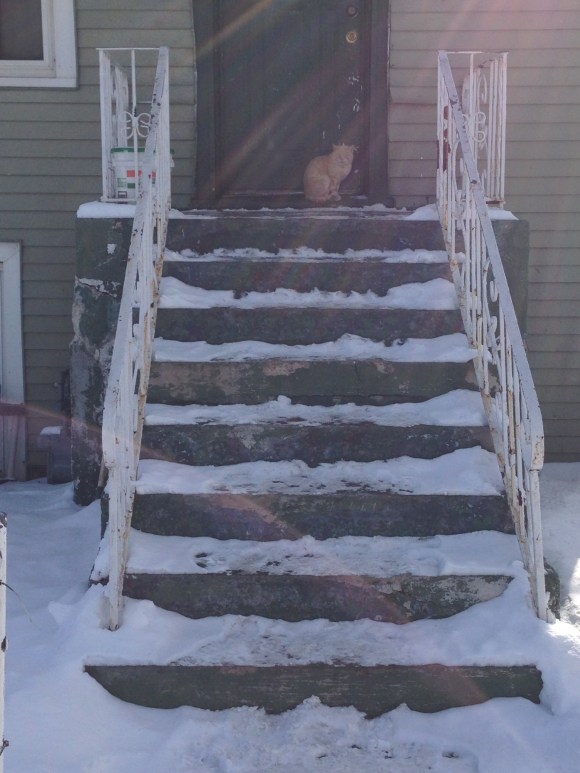Going Door to Door in Englewood with PAWS Chicago to Help People Care for Their Pets
PAWS Chicago’s Paws for Life Community Outreach Program provides resources and awareness to residents in Englewood on how to help and care for their pets.
I’ve been volunteering weekly with program leader, Laurie Maxwell, and wrote about some experiences so far.
This is also where I met Alicia, who is caring for a colony of cats abandoned at her door in Englewood. I am so happy I met her and reached out to Hyde Park Cats on her behalf. To date, they’ve admitted four of the cats on her block into their adoption program.
In addition to meeting Alicia, we went to peoples’ houses that now have an ongoing relationship with PAWS Chicago as they receive help for their pets, with a specific emphasis on spay/neuter resources.
One house was a follow-up visit to see this little dog named Here We Go after her spay surgery. What a great name for a great dog. All she wants is pets.
 Here We Go was rescued by her owner. She found her down the block chained in a backyard, 24 hours a day in all kinds of weather. She convinced the previous owners to let her keep Here We Go instead. She did not have money for vetting, and was very happy with the services that PAWS was able to provide her.
Here We Go was rescued by her owner. She found her down the block chained in a backyard, 24 hours a day in all kinds of weather. She convinced the previous owners to let her keep Here We Go instead. She did not have money for vetting, and was very happy with the services that PAWS was able to provide her.
On that same block, we visited another house who turned out to have fifteen small dogs inside, including two litters of puppies. These puppies were very young.

These puppies were a bit older and very playful.
Their owners were pretty overwhelmed and had plans to give the puppies away. They brought out the adult dogs they purchased from various breeders, but desperately wanted all of the dogs spayed and neutered. They just did not know how to go about it.
The story of which puppies went with which dogs was pretty confusing, and this is where it was fun to watch Laurie in action. She drew a family tree with all of the dogs’ names listed, so that they could all be sure that ALL of the dogs would receive vet care in a timely manner.
Amidst meeting all of the dogs, this cat came up to us for pets. She was visibly pregnant.

Turns out she belongs to the same house, and they let her in and out. She was perfectly fine amidst all of the commotion, and was friends with the dogs.

Because of her condition, Laurie took her that day to get spayed in PAWS’ clinic.
We also returned a colony cat that was treated for a head wound during his TNR surgery. This cat was trapped by a feeder named Johnny that cares for all of the cats that come to his auto lot. George from Chicago TNR has been helping Johnny for awhile now. When Johnny trapped this cat, he called George, who then called Laurie. Laurie came within the hour to pick up this cat and took him straight to the clinic for vet care.

I’ve been to this colony before. George took me around Englewood a few winters ago showing me all of her TNR work in that area.
One of the cats we met that day had an eye injury that was treated. I saw this same cat now. The wound is pink but healed now.
 These cats are pretty friendly and cared for by Johnny, but could also use indoor homes. There are many cats like this Englewood.
These cats are pretty friendly and cared for by Johnny, but could also use indoor homes. There are many cats like this Englewood.
There are so many more stories like this, and so many residents requesting help for their pets. I plan on continuing to help in any way I can. If you are interested in volunteering, please visit the PAWS For Life Facebook page.





















































What a great program. Thank you so much for writing about it.